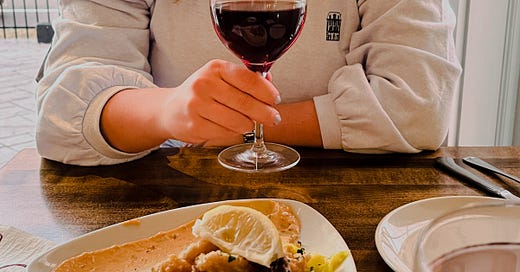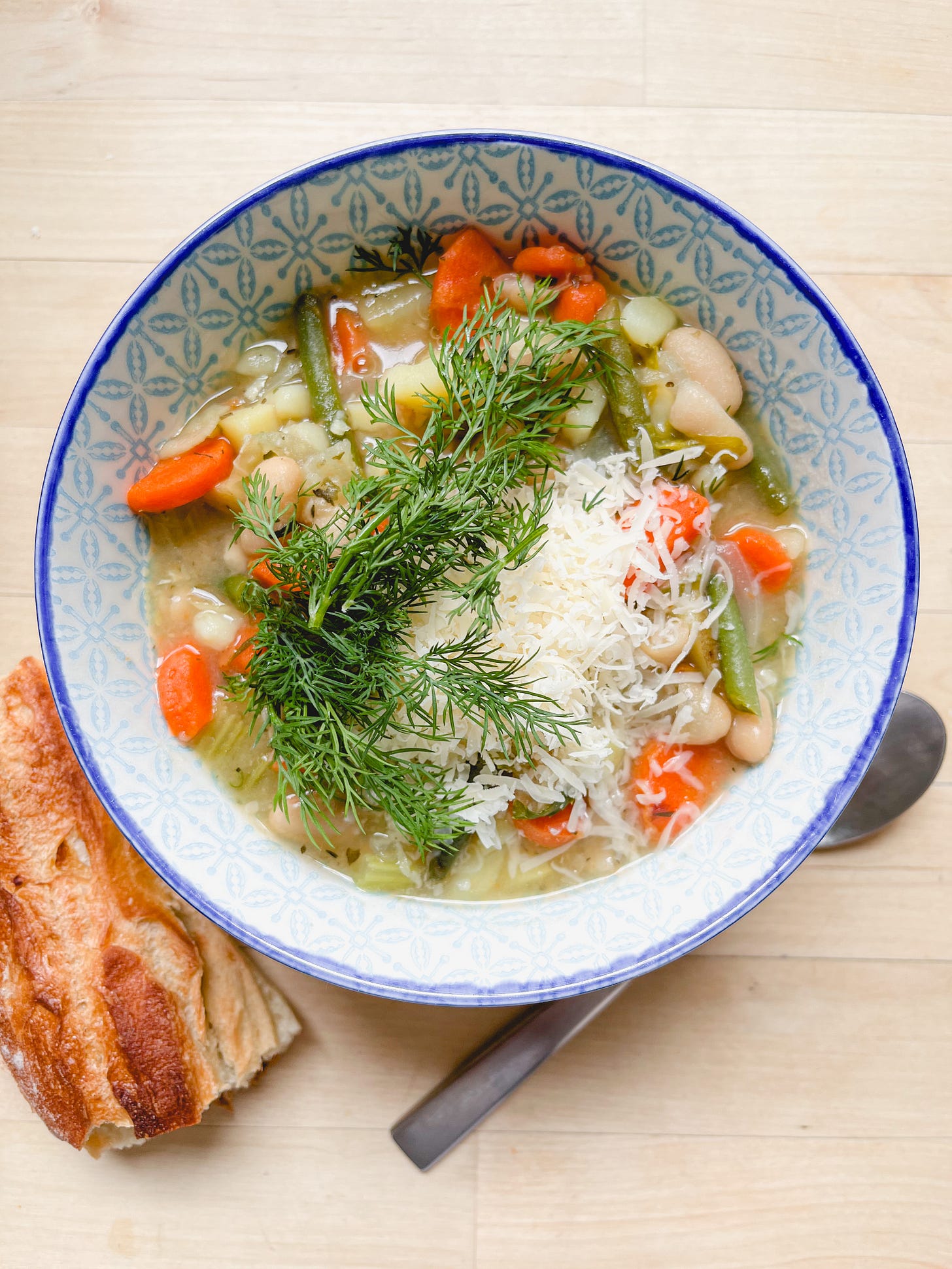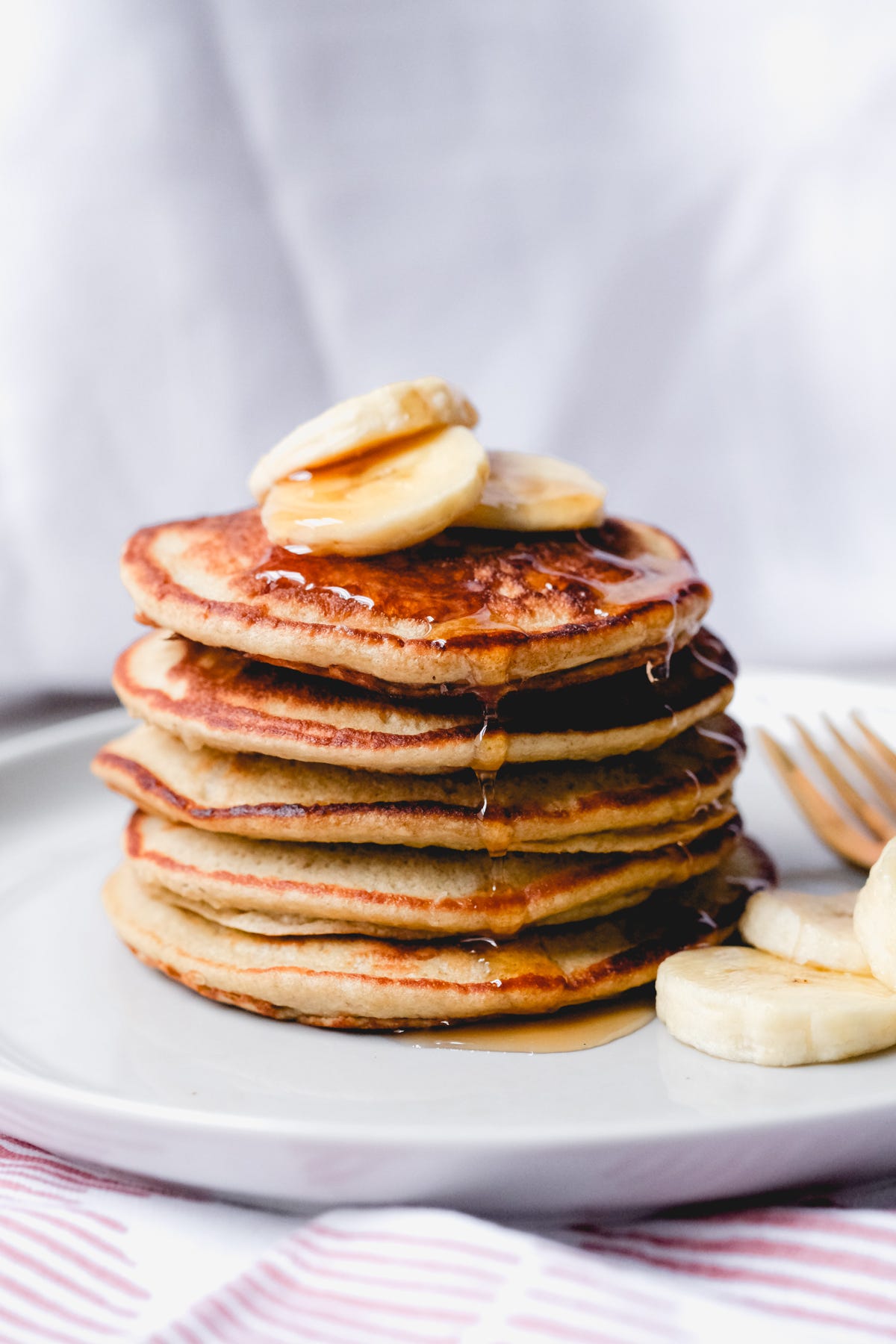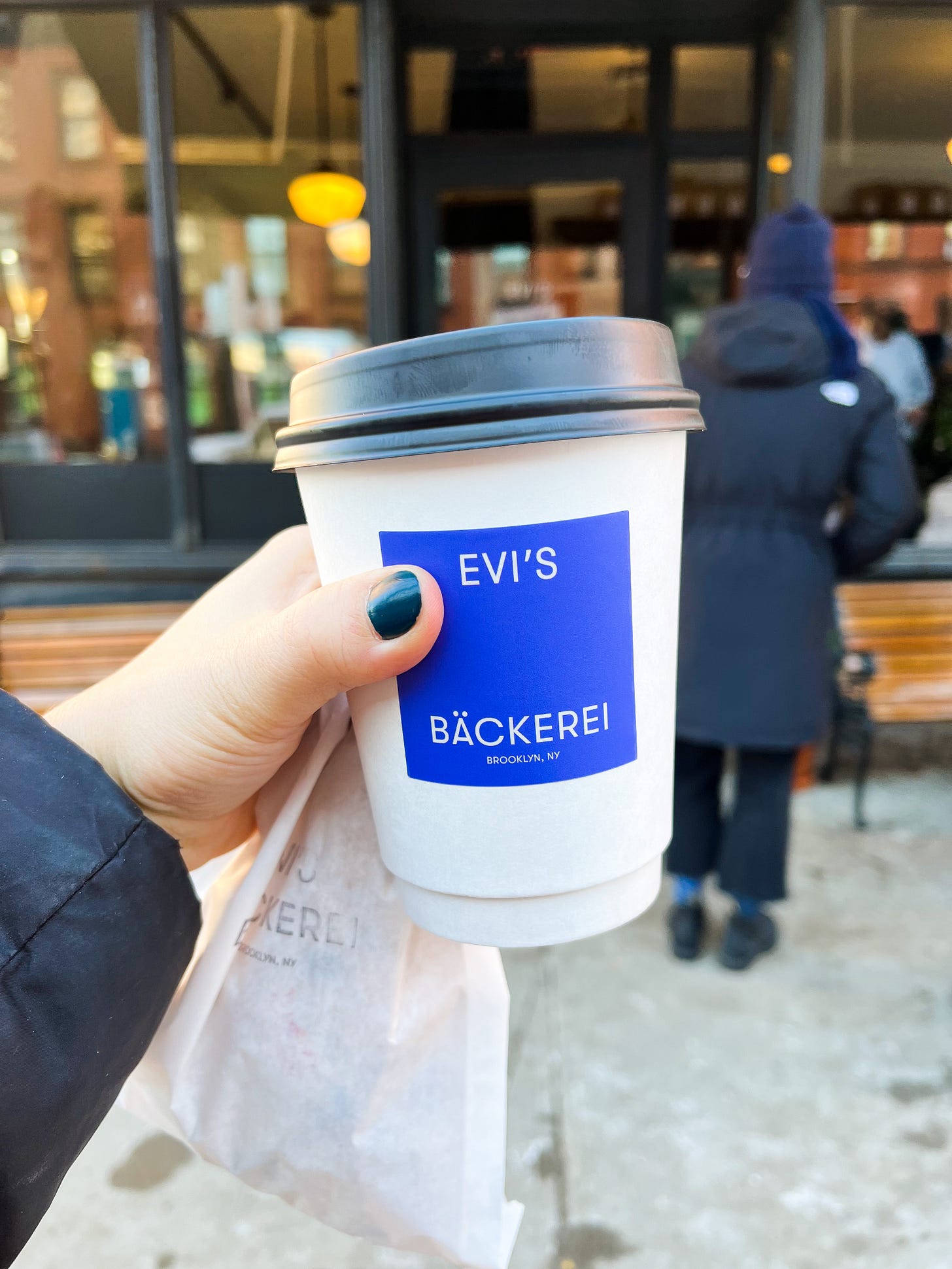Welcome to Forkful, a weekly nutrition newsletter encouraging you to break up with dieting—and pick up a fork. Subscribe for regular updates with exclusive recipes, interviews, Q&A’s, product recommendations, and much more!
FYI, my annual subscription is on ✨sale!✨ for 30/year. The sale ends 2/1/22.
I think it’s kind of hilarious that we live in a carb-phobic world, and yet, the healthiest people on the planet eat mostly carbs.
Lately, I’ve had an obsession with the Blue Zones. If you haven’t heard of it, the Blue Zones are communities with the highest concentration of people that live to be over 100. The color “blue” doesn’t really mean anything—it’s simply used because researchers circled these places on the map with a blue marker. What’s more important is the specific study on the lifestyles of these communities and what similarities they have that can help determine healthy ways of living for the rest of the world.
While there are some differences in their lifestyles, there are a few underlying factors to note that the world may be surprised to learn. One of them is their diets, and how carbs are actually a large percentage of what they eat.
Right before my holiday break, I picked up a copy of National Geographic’s special edition called Blue Zones: The Science of Living Longer and was fascinated by the in-depth research on each zone. Sections of the magazine were dedicated to each community, and they all started off by showing a percentage breakdown of their diets.
Now, remember—carbohydrates aren’t just pasta (although it’s obviously a tasty one to include). Carbs are a macronutrient found in all kinds of foods including grains, vegetables (starchy and non-starchy), fruits, and legumes. When breaking down each blue zone, here is the percentage of carbohydrates consumed by those communities:
Ikaria, Greece: 79%
Okinawa, Japan: 71%
Sardinia, Italy: 64%
Loma Linda, California: 79%
Nicoya Peninsula, Costa Rica: 55%
The rest of their diets include a small amount of meat, fish, poultry, dairy, eggs, some added fats (like cooking oils), and a very small percentage of treats.
It’s important to note that the quality of the carbs consumed is, well, really good. These percentages are high, but they are a mix of all kinds of carbs that can benefit your body in many ways. Vegetables, fruits, legumes, and whole grains are rich in fiber, which helps to regulate your blood sugar, feed the good bacteria in your gut (and a healthy microbiome is linked to longer life), assist with digestion and bowel movements, and of course, keeps your body full, satisfied, and energized.
Does this mean you shouldn’t eat pasta? Is that a bad carb?
News flash: No food is “good” or “bad.” It’s just food.
The notion that there are “bad” carbs is likely due to the quality of the carb presented. Foods that have been refined to become “white”—like pasta, bread, rice, tortillas—have been stripped of the natural fiber and nutrients that make carbs so good for you. They’re somewhat filling and tasty, but they aren’t providing you with those healthy nutrients that your body needs.
Now, if you’re at an Italian restaurant and there’s homemade pasta, what are you going to do, not eat it? Of course, you are. It’s going to be freaking delicious.
But on a daily basis when you’re at home cooking meals for yourself, you can turn to the carbohydrates that you know your body is going to seriously benefit from. The same carbohydrates that are linked to a long life in different parts of the world.
Here’s more of my research on the Blue Zones and eating carbs.
So where does wine fit in?
For a long time I thought that drinking alcohol was just all-out terrible for my body, but as it turns out, residents of some Blue Zones actually drink it regularly. Some even daily.
Red wine, in particular, is their alcoholic beverage of choice. Why? Because it tastes good—duh. But it’s also full of antioxidants that are anti-inflammatory and reduce oxidative stress in the body. Wine has also been linked to good heart health, blood pressure, and even brain health. Here’s more in-depth research I’ve done in case you need further proof.
This is in moderation, of course. When taking a closer look at the diets in the Blue Zones, one or two glasses of wine daily is all that’s consumed—usually with a meal, and usually enjoyed in good company. One 2018 study published in the journal Diseases concluded that “moderate wine intake, at 1–2 glasses per day as part of the Mediterranean diet, has been positively associated with human health promotion, disease prevention, and disease prognosis.”
A monumental moment for the carb-phobic person.
As someone who has fallen victim to toxic diet culture and yo-yo dieting, I’ve been through my fair share of diets that are carb-phobic. While they aren’t overtly “keto” per se, they are lower in carbohydrates and discourage consuming more than one or two servings of carbohydrates a day—while encouraging the consumption of more meat. Which is pretty much the opposite of what the healthiest people in the world are doing.
When I started learning more about the Blue Zones, it sort of hit me—why am I dieting in the first place? The healthiest people on the planet aren’t the skinniest by any means, but they are living the longest because they are choosing practices that are really good for the body. They eat healthy diets, move their bodies daily, dedicate themselves to their communities, and have daily practices that relieve stress (like religion). They aren’t worried about carbs or weight or how their looks are perceived by the world. They are simply living a life that makes them happy for as long as possible.
And isn’t that what we’re ultimately going for? A long, happy, healthy life instead of a life constantly worried about the few pounds you want to lose?
This was a revolutionary thought—a pivotal moment for how I perceive my body and my life.
And, of course, it had me wanting to make all kinds of meals full of carbs. Like this comforting veggie stew.
When you have so many veggies in the fridge you need to use up, or you’ve taken a trip to the farmer’s market and bought a bit too much this time, this is the recipe you want in your back pocket.
I’ve had a hankering for stew for a few weeks now. I blame it on the fact that everywhere I turn online, someone is talking about stew. It’s the perfect comforting meal for the winter months, and quite frankly, one of the easiest meals to throw together. Especially when you just keep your stew simple with veggies and beans.
The inspiration for this recipe, I admit, came from an old cookbook I’ve had on the shelf. It was one that my husband bought me through this cookbook subscription he got for my birthday one year where I got all kinds of old cookbooks that I’m kind of intimidated to dive into. They’re the type of books that tell you to throw “a little bit” of this and a “pinch” of that in your recipes, which frightens me. When I’m learning a recipe, I want amounts, ya know?
This Stew cookbook (which I can’t even find online, it’s so old) has a generic vegetable stew recipe that, quite honestly, isn’t even a recipe. Just a description of how to throw together your own customizable veggie stew. So I bought some vegetables and just went for it.
The first piece of advice in this book is to cook hearty vegetables first. Think potatoes, turnips, radishes, carrots—those root vegetables that take a bit longer to cook compared to others. Boil them for about 10 minutes.
After those boil in the stock for a while, you then throw in the “quick cook” vegetables next. These are the vegetables that don’t take a ton of time—like green beans, celery, onions, peppers, leafy greens, cabbage, etc. This is also where you can add in your beans/chickpeas. Boil with the hearty vegetables for another 10.
And...that’s honestly it. Swirl in some seasoning, top with fresh dill or parsley along with some grated Parmesan cheese, and make sure to have some crusty bread to pair. You got yourself a deliciously healthy lunch for the rest of the week.
For those of you who love a recipe, here’s how I made mine:
Leftover Veggie Dump Stew
Ingredients:
4 cups chicken broth (or water with bouillon)
3 Yukon Gold potatoes, cubed small
3 carrots, diced small
1 cup green beans, diced
1 yellow onion, diced
4 stalks of celery (with leaves), diced
3 garlic cloves, minced
1 15 oz. can cannellini beans
Fresh dill and grated parmesan, for topping (optional)
Artisanal bread, for dipping (optional)
Instructions:
Bring your chicken broth to a boil in a dutch oven.
Toss in the potatoes and carrots. Cook for 10 minutes.
Add the green beans, onion, celery with leaves, garlic cloves, and beans. Cook for another 10 minutes
Spoon into bowls. Top with fresh dill, grated parmesan, and fresh cracked pepper, if desired. You can also toast up a slice of bread for dipping as well!
Use up your leftover bananas and make pancakes!
Sure, banana bread is always an option. But if you’re like me and you likely won’t get through a whole loaf, sometimes it’s just easier to whip up a quick batch of pancakes. Especially when “whip up” literally means blending up the ingredients at once.
This single-stack banana pancake recipe is one of my absolute favorites. It uses up a banana, makes four perfectly sized pancakes for one, and it’s made with oatmeal. Or, as I like to call it, the ideal whole grain. You all know I’m an oatmeal hoe.
This week we announced the winners of the Eat This, Not That! 2022 Food Awards—and I am absolutely obsessed with the final product. Get ready...your wallet won’t like you after reading about all of this delicious amazingness.
Here are all of the random things that were on my plate this week.
What I cooked: Kimchi Bokkeumbap for Two by Cooks Illustrated
Where I went: Evi’s Backerei in Prospect Heights, from the team at Olmsted!
What I read: Winter Solstice by Elin Hilderbrand
What I listened to: Oh, Invented World by The Shins
What I watched: The Edge of Seventeen on Netflix











